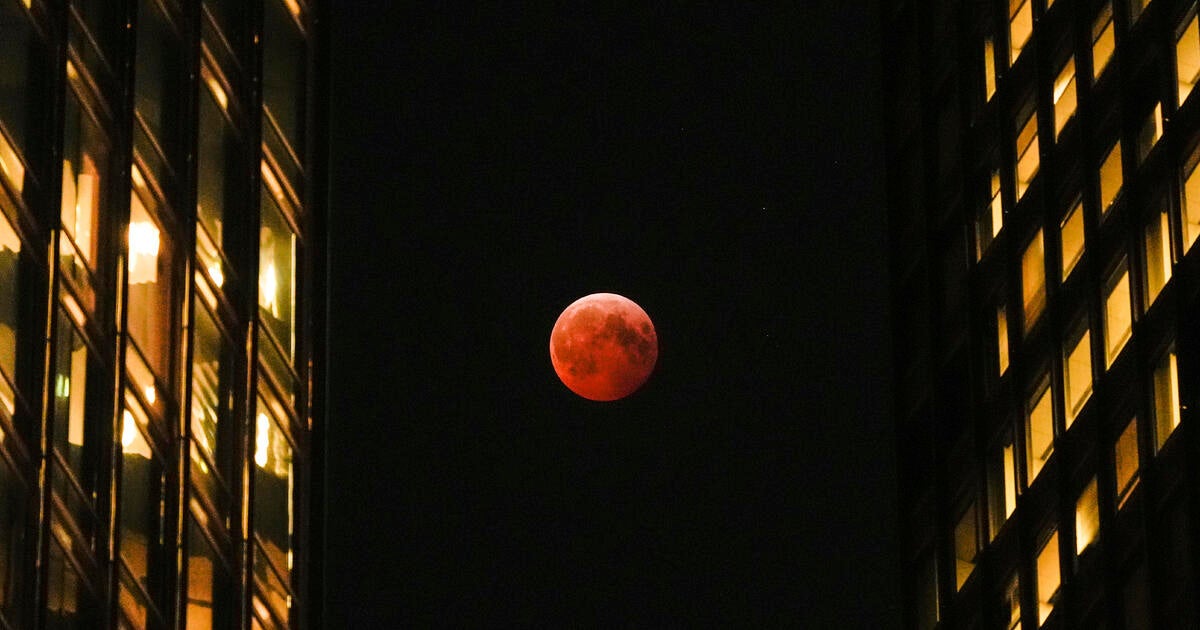Captivating Cosmic Display: The Total Lunar Eclipse
Last night, a breathtaking cosmic event unfolded before our eyes—a total lunar eclipse coinciding with the mesmerizing Blood Worm Moon. For stargazers and casual observers alike, this celestial display was nothing short of captivating. As the Earth’s shadow enveloped the Moon, a transformation took place, bathing our lunar companion in shades of deep red. This article delves into the science behind this awe-inspiring phenomenon, the cultural significance of the Blood Worm Moon, and the stunning visual experiences that accompanied last night’s event.
Understanding the Total Lunar Eclipse
A total lunar eclipse occurs when the Earth passes directly between the Sun and the Moon, casting a shadow that fully covers the lunar surface. This alignment allows the Earth’s atmosphere to filter and refract sunlight, creating the characteristic reddish hue during the eclipse—hence the term “Blood Moon.” But what causes this striking color change?
During the eclipse, as the light passes through the Earth’s atmosphere, shorter wavelengths (blue and green) scatter out, while longer wavelengths (red and orange) dominate. This scattering effect is similar to what happens during sunrise and sunset, giving the Moon its enchanting glow. The phenomenon is not only visually striking but also scientifically significant, providing insights into the Earth’s atmosphere.
The Enigmatic Blood Worm Moon
The term “Blood Worm Moon” derives from several cultural traditions and agricultural references. Traditionally, the Worm Moon occurs in March, when earthworms begin to emerge from the thawed ground, signaling the arrival of spring. This name reflects the connection between lunar phases and seasonal changes that many cultures have recognized for centuries.
Additionally, the Blood Moon has been steeped in superstition and myth. Many ancient civilizations viewed lunar eclipses as omens or signs from the gods. The combination of the total lunar eclipse and the Blood Worm Moon adds a layer of intrigue, as it invites us to reflect on how humanity has interpreted celestial events throughout history.
Visual Splendor: Capturing the Moment
Skywatchers across the globe were treated to a spectacular view of the eclipse. With clear skies in various regions, photographers and astronomy enthusiasts seized the opportunity to capture stunning images. Here’s what made this event particularly enchanting:
- Color Variations: The eclipse showcased a range of colors, from vibrant reds to deep oranges and browns, creating a visually dynamic experience.
- Duration: The totality phase lasted for several minutes, allowing observers ample time to appreciate the beauty of the event.
- Visibility: Unlike solar eclipses, lunar eclipses are safe to observe without special equipment, making them accessible to everyone.
Many shared their experiences on social media, posting images that captured the Moon’s transformation. For those who missed the live spectacle, various online platforms offered live streams, enabling a broader audience to witness this cosmic dance.
The Science Behind the Eclipse
While the visual experience of a total lunar eclipse is captivating, the underlying science is equally fascinating. During the eclipse, several stages occur:
- Penumbral Phase: The Moon enters the Earth’s penumbral shadow, resulting in a subtle shading.
- Partial Phase: As the Moon moves further into the Earth’s shadow, a portion begins to darken.
- Totality: The entire Moon is engulfed in the Earth’s umbral shadow, exhibiting the striking red coloration.
- Exit from the Shadow: The Moon gradually re-emerges from the Earth’s shadow, returning to its normal brightness.
This intricate process occurs due to the alignment of celestial bodies, and it’s a reminder of the dynamic nature of our solar system. Astronomers continue to study these eclipses to gain insights into the Earth’s atmosphere and the history of lunar geology.
Cultural Significance and Myths
Throughout history, lunar eclipses have captured the imagination of countless civilizations. The Blood Worm Moon, in particular, has been associated with various myths and legends:
- Native American Traditions: Many tribes referred to this full moon as the Worm Moon, marking the time when earthworms became visible as spring approached.
- Ancient Civilizations: The Maya and Aztec cultures viewed lunar eclipses as significant events, often tied to agricultural cycles and religious ceremonies.
- Modern Interpretations: Today, many people still associate lunar eclipses with transformation, renewal, and introspection.
Such cultural ties remind us of the interconnectedness of humanity and the cosmos. The Blood Worm Moon serves as a bridge between the natural world and our cultural narratives, enriching our understanding of both.
Preparing for Future Eclipses
For those who were captivated by last night’s display, there’s exciting news: total lunar eclipses occur roughly twice a year. Mark your calendars for future events! To enhance your viewing experience, consider the following tips:
- Find a Dark Location: Light pollution can hinder visibility, so seek out areas away from city lights.
- Bring Binoculars or a Telescope: While the eclipse can be viewed with the naked eye, binoculars or a telescope can offer a closer look at the Moon’s surface.
- Plan Ahead: Check the timing of the eclipse and prepare your equipment in advance for the best experience.
As we look forward to future eclipses, the experiences and memories created during these celestial events remind us of our place in the universe. They serve as a call to appreciate the beauty and wonder that surrounds us—both on Earth and beyond.
Conclusion
The total lunar eclipse and the Blood Worm Moon offered a rare and enchanting spectacle that captivated skywatchers worldwide. This celestial event not only provided stunning visuals but also sparked curiosity and reflection on the sciences and cultural heritage associated with lunar phenomena. As we move forward, let us continue to embrace the magic of the cosmos, exploring the mysteries of the universe while forging deeper connections to our own planet.
See more Your Daily Weather



